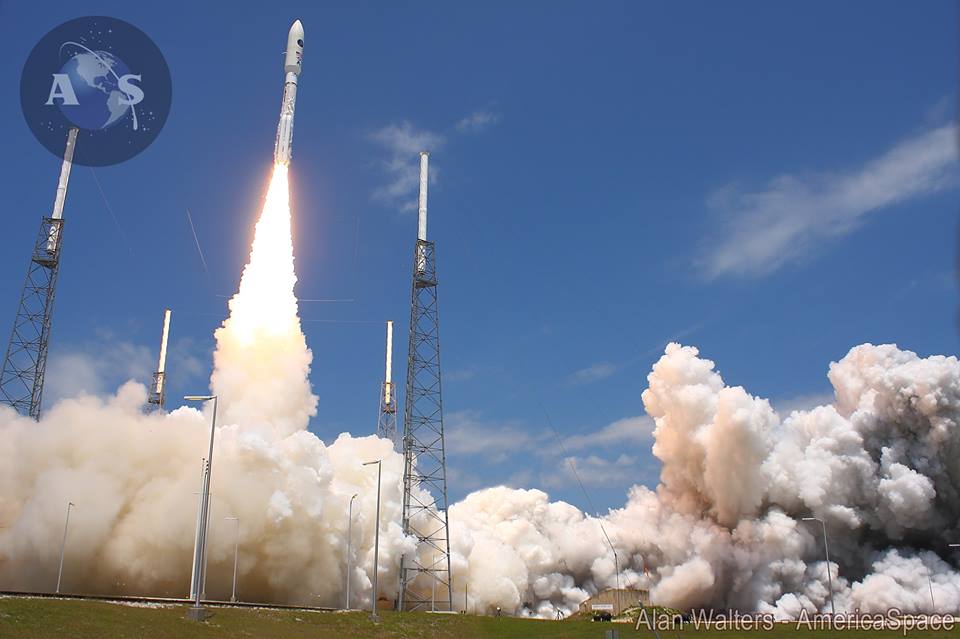
With the dust having barely settled on the East Coast, following the Oct. 2 pre-dawn liftoff of its 100th mission—carrying Mexico’s Morelos-3 communications satellite from Cape Canaveral, Fla., United Launch Alliance (ULA) successfully flew its second Atlas-V booster in less than a week, as the classified NROL-55 payload for the National Reconnaissance Office successfully rocketed out of Vandenberg Air Force Base, Calif., on Thursday, 8 October. This launch represented the seventh Atlas V mission of the year, with yet another expected to deliver the Global Positioning System (GPS) IIF-11 satellite into orbit on 30 October. It marked the first occasion that as many as three Atlas Vs have flown within a single month.
As ULA heads into the dawn of its 10th year of operations, it can also look ahead to a full slate of U.S. Government and NASA payloads aboard its fleet of Atlas V, Delta IV, and Delta II vehicles, together with a critical new role as a Commercial Crew launch provider for Boeing’s Starliner spacecraft from 2017 onward and the new Vulcan booster, which is tracking a maiden voyage in 2019.
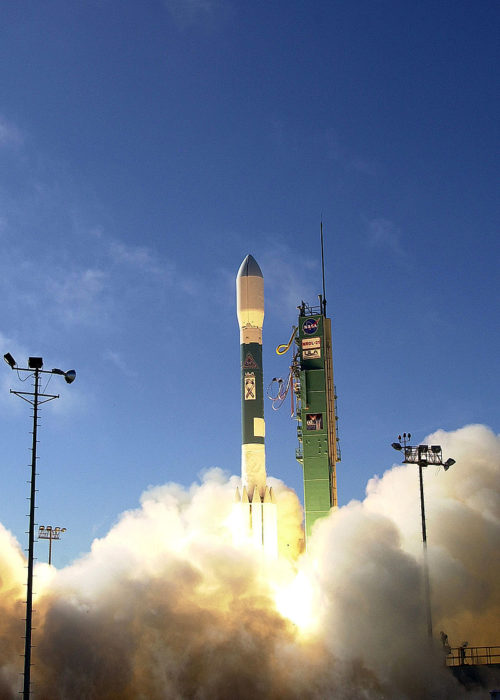
Under the language of its “Perfect Product Delivery” business ethic, ULA commits “every person, department and process” to the end-goal of “delivering perfect designs, documentation and products to both internal and external customers.” Described by the company as “a unique business improvement endeavor between ULA and our key suppliers,” which seeks to “jointly determine how to improve using only the appropriate tools necessary to get the highest return.” Specific tools utilized include the “Six Sigma” process-improvement philosophy—which places a focus upon stable and predictable process results, together with measurable and controllable manufacturing and business practices—and ULA’s dedication has allowed it to deliver 100 missions with near-perfect success between 14 December 2006 and 2 October 2015 on behalf of its myriad customers.
“The ULA team is focused on Perfect Product Delivery for every mission,” ULA’s current President and Chief Executive Officer (CEO) Tory Bruno told AmericaSpace in an email correspondence, “which includes a relentless focus on mission success (the perfect product) and also excellence and continuous improvement in meeting all of the needs of our customers (the perfect delivery). Our one-mission-at-a-time mantra has led ULA to launch 100 missions with 100-percent mission success. I attribute the success to two key factors, including an outstanding fleet of exceptionally capable rockets and a world-class, extraordinary team focused on mission success.”
By their own admission, many of the engineers, technicians, and managers responsible for building the Atlas V, Delta IV, and Delta II vehicles which have achieved this remarkable 100-mission feat—“Nobody else has a record like that,” said Structural Assembler Chris Delgado of ULA’s Harlingen, Texas, facility—feel a sense of unease when the clock passes T-4 minutes and the “Terminal Count” commences. As the Flight Termination System (FTS) is enabled, as the topping-off of cryogenic propellants concludes and as the booster’s on-board systems assume primary command of all critical functions, hearts start to race, lumps rise within throats, and nervous tension congregates in stomachs. “I get butterflies,” admitted Delgado. “It’s built by hand. It’s unbelievable that we do that and I know my fellow workers here and the pride we take in building this rocket.”
That said, it was not always clear that the organization would work, for its genesis came about through an unlikely meeting of minds from two competitors, Lockheed Martin and Boeing, who had been logged in bitter litigation for several years before they finally merged to form ULA. During the mid-1990s, both were successful bidders for the Air Force’s Evolved Expendable Launch Vehicle (EELV) contracts, with Lockheed Martin basing its architecture on the Atlas V and Boeing on the Delta IV. Both companies developed common booster cores for their respective vehicles, emphasizing standardization and the use of proven, reliable technologies, but a few years later claims of industrial espionage led to complex litigation which ended on 2 May 2005, when agreements were signed to “create a joint venture that will combine the production, engineering, test and launch operations associated with U.S. Government launches of Boeing Delta and Lockheed Martin Atlas rockets.” At the time of the announcement, it was stressed that ULA would “permit our national customers to achieve their mission objectives while reflecting current budget pressures and providing the Government with full cost visibility” and that a merger would enable “assured access to space at the lowest possible cost while ensuring enhanced reliability by eliminating duplicate infrastructure and bringing expects from both companies to focus on mission assurance.” Under the original mandate, ULA expected to yield annual Government savings of between $100 million and $150 million.
The initial structure saw Lockheed Martin Space Transportation Vice President and General Manager Michael Gass installed as ULA President and Chief Executive Officer (CEO), with Boeing Expendable Launch Systems Vice President Dan Collins appointed as Chief Operating Officer (COO), with a Boeing executive named as Chief Financial Officer (CFO) and a Lockheed Martin executive as Controller. All four leaders would report to a six-member Board of Directors, of which Boeing and Lockheed Martin would each appoint three directors. Initial headquarters were established in Denver, Colo., close to Lockheed Martin’s Space Systems facilities, with the principal assembly and integration activities taking place at Boeing’s plant in Decatur, Ala.
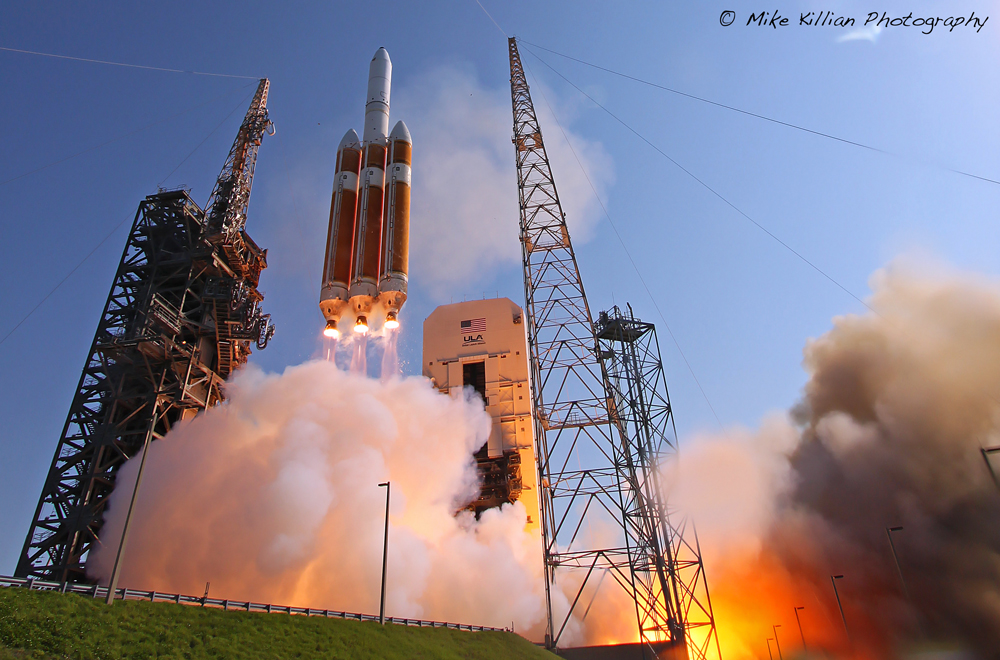
Nineteen months later, on 1 December 2006, after extensive reviews, support from the Department of Defense and ultimate approval from the Federal Trade Commission (FTC), the new organization officially began operations. The Air Force, in particular, had long supported the 50-50 partnership, hoping that the Atlas V and Delta IV programs would function in tandem, thereby keeping both systems viable, reducing cost overheads, and avoiding the unnecessary duplication of effort. At the time of ULA’s creation, both rocket families had proud heritages, stretching back more than four decades, to the very dawn of the Space Age, with the Delta having completed 321 missions since 1960 and the Atlas having flown 590 times since mid-1957. Notably, an Atlas had delivered America’s first man into orbit in February 1962, whilst a Thor-Delta had transported the world’s communications satellite, Telstar 1, aloft in July 1962. “It was kind of a surprise to most of the team,” acquiesced Steve Huff, ULA Operations Systems Engineering Leader at Cape Canaveral Air Force Station. “We didn’t know how we were going to blend the two heritages, but within a couple of weeks, we were launching rockets!”
Dovetailed into the Atlas V/Delta IV fleet was the well-proven and highly reliable Delta II, which executed the first launch under ULA’s auspices on 14 December 2006, flying out of Vandenberg Air Force Base, when it delivered the classified NROL-21 payload on behalf of the National Reconnaissance Office. Plans for 2007 were ambitious, with no fewer than 21 missions—12 Delta IIs, six Atlas Vs, and three Delta IVs—slated to occur from Vandenberg and the Cape, although as circumstances transpired a total of 13 flights were accomplished. Despite only being the company’s first year of operations, this achievement retains third place on the list of the most ULA launches ever conducted in a single calendar year, behind 2014’s achievement of 14 missions and 2009’s all-time record of 16 flights.
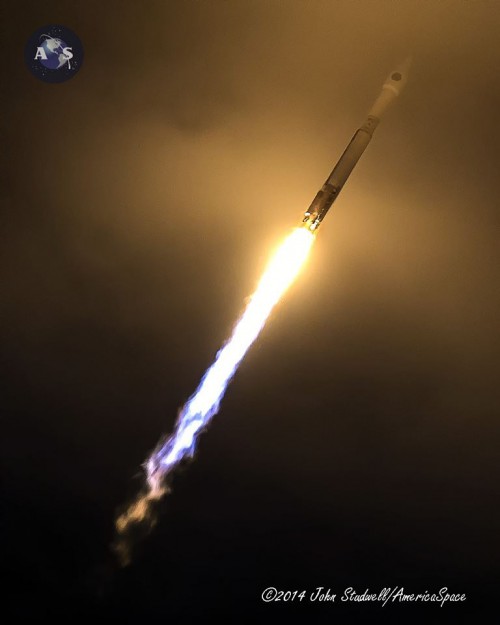
Of 2007’s haul, ULA completed its first foray from the East Coast on 17 February, carrying NASA’s Time History of Events and Macroscale Interactions During Substorms (THEMIS), its first Atlas V launch on 8 March, and its first Delta IV—flying in the “Heavy” configuration for the first time, operationally—on 10 November. Additional highlights included the launch of NASA’s Phoenix lander, bound for the first successful touchdown in Mars’ polar regions, and the Dawn spacecraft, headed for eventual rendezvous with the dwarf worlds Ceres and Vesta.
However, on 15 June 2007, ULA experienced its first in-flight anomaly, when an Atlas V experienced a thrust shortfall in its Centaur upper stage, which suffered a hydrogen leak and a premature shutdown during its second “burn” to insert a pair of Naval Ocean Surveillance System (NOSS) satellites into orbit. Although the payloads apparently reached their intended orbital locations, this event and another which hit the Delta IV in October 2012 would create blemishes on ULA’s otherwise near-spotless launch record.
As ULA celebrated the end of its first year of operations, it also looked ahead to the combination of major Atlas/Delta production operations at a new manufacturing facility in Decatur, Ala., although January 2008 brought a growing realization that the Delta II’s medium-lift capability would soon be characterized by lower launch rates, with the reduction in the volume of NASA science missions and the completion of the Air Force’s GPS IIR network of global timing, navigation and positioning satellites. However, as circumstances transpired, in September 2011, NASA added the Delta II to its NASA Launch Services (NLS)-II contract, offering a new lease of life for medium-class science payloads and the booster subsequently drew three more assignments, through 2017.
In the meantime, the ULA flight manifest continued at a rapid-fire pace, with the Atlas V flying for the first time from Vandenberg on 13 March 2008 and, a month later, on 14 April, successfully delivered its heaviest-yet commercial communications satellite—the 14,625-pound (6,634-kg) ICO-G1—into Geostationary Transfer Orbit (GTO). Kicking off 2009 with the Delta IV Heavy’s first National Reconnaissance Office (NRO) payload, ULA enjoyed a year of unbridled success, with 16 missions completed in total. These included five Atlas Vs, eight Delta IIs, and a trio of Delta IVs, of which 11 originated from the Cape and the remainder from Vandenberg. Although overwhelmingly dominated by military reconnaissance, communications, and navigational satellites, the 2009 load also included NASA’s Kepler observatory for detecting extrasolar planets, together with the Moon-bound Lunar Reconnaissance Orbiter (LRO) and Lunar Crater Observation and Sensing Satellite (LCROSS) and the Wide-field Infrared Survey Explorer (WISE) telescope. The year also saw the 600th total flight by an Atlas in October, ULA’s second commercial communications satellite in November, and, by December, after 36 months of operations, ULA had accomplished 36 missions, all with a 100-percent success rate.
It was an achievement which had not come easily. “It’s taken a lot of attention to detail,” explained Craig Langford, Production Director at ULA’s Decatur facility. “It’s taken a lot of hard work and it’s taken a lot of people just doing their job, every day.” Yet there is a single word which sums up the entire culture: Teamwork. “Mission success is everything,” declared Jackie Chadwick, Program Manager at Decatur, in a recent ULA video celebrating the completion of 100 missions. “That’s what we take our most pride on.” Others, including Vandenberg mechanical engineer Dane Drefke and Denver, Colo.-based mechanical engineer Joe Weldon, are acutely aware that rocketry is an unforgiving business. “You get one chance to get it right,” said Drefke, “and if it’s not 100-percent right when it leaves the ground, you’ll know about it!” Added Weldon: “Because we’ve done it 99 times in a row, and now 100 times in a row, it doesn’t mean 101 is going to be any easier.” There is something else, too: a degree of patriotism and love of country, given the overwhelmingly military nature of ULA’s payloads. “When I think about the people who are relying on me,” said Drefke, “the men and women in uniform, who are out in the field, defending our freedom, I feel a tremendous obligation to them to do the same.”
In the spring of 2010, the possibility of an Atlas booster someday returning U.S. astronauts to low-Earth orbit (LEO) for the first time since the end of Project Mercury became an increasingly likely possibility, as NASA selected ULA to participate in its Commercial Crew Development (CCDev) program, awarding the company an initial $6.7 million to build an Emergency Detection System (EDS) for post-shuttle piloted space vehicles. Later that year, ULA also joined the Commercial Spaceflight Federation as an executive member, whilst in February 2011 the first successful trials of the EDS were performed at the Denver Launch Support Center in Denver, Colo., and in August—just two weeks after the final shuttle mission ended—the Atlas V was formally selected as Boeing’s vehicle of choice to launch its CST-100 Commercial Crew spacecraft. Under the terms of the original contract, ULA would stage the CST-100 flights from Space Launch Complex (SLC)-41 at the Cape, using the Atlas V in its “412” configuration, with a 13-foot-diameter (4-meter) Payload Fairing (PLF), a single side-mounted solid-fueled booster, and a Dual-Engine Centaur (DEC) upper stage. An initial unpiloted mission and a subsequent crewed “shakedown” flight were provisionally scheduled for 2015, although these dates have since slipped by two years to the right, on account of uneven funding for the Commercial Crew Program. By the end of 2011, ULA had satisfactorily completed a Design Equivalency Review (DER) of the compliance of Atlas V systems with NASA’s human spaceflight requirements.
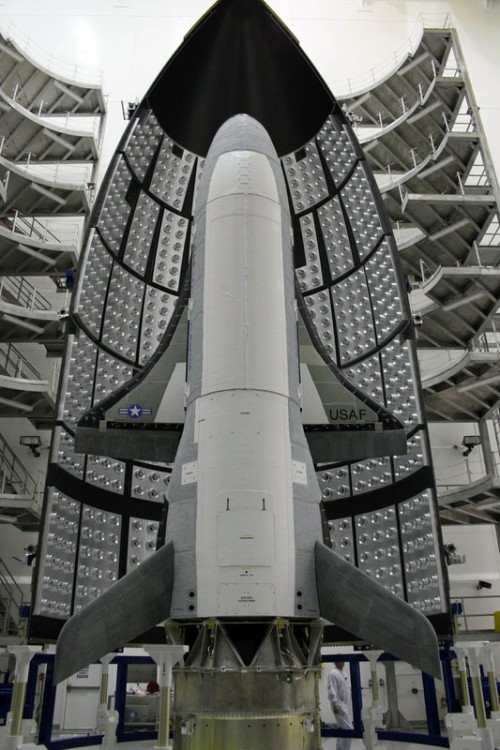
In the meantime, 2010 and 2011 saw a combined total of six Delta IVs, nine Atlas Vs, and four Delta IIs launched into orbit, delivering NASA’s Solar Dynamics Observatory (SDO) into orbit in February 2010 and the first X-37B Orbital Test Vehicle (OTV) long-duration mini-shuttle in April. By year’s end, no fewer than 45 missions had been executed by ULA in its first 48 months, with 2011 featuring the launch of NASA’s Juno orbiter to Jupiter in August, followed by the Moon-bound Gravity Recovery and Interior Laboratory (GRAIL) in September and the Curiosity rover to Mars in November. The Delta IV Heavy saw its first launch from Vandenberg, the X-37B flew a second time, and ULA completed its 50th overall mission in May 2011, when it ferried the first Geosynchronous Earth Orbit (GEO) member of the Space-Based Infrared System (SBIRS) early-warning network aloft.
The following year, 2012, brought a further 10 launches—including the Van Allen Probes and the first Mobile User Objective System (MUOS) military communications satellite, which, at 15,000 pounds (6,800 kg), tipped the scales as the most massive payload yet orbited by ULA—and substantial advancements in the human-rating of the Atlas V, ahead of its CST-100 role. In February, ULA passed a Tailored System Requirements Review (TSRR) and a Probabilistic Safety Analysis (PSA) Review, which reviewed the booster and its safety-critical components, and in April formed an in-house Human Launch Services Organization, dedicated to supporting NASA in the development of new capabilities to deliver astronauts into low-Earth orbit and beyond. Passing its 60th mission in May, ULA passed the Systems Requirements Review (SRR) and Systems Design Review (SDR) in July and the Hazard, System Safety and Probabilistic Risk Assessment in October, as the effort to someday “human-rate” the Atlas V gathered pace.
Then, in October, ULA experienced its second major in-flight anomaly, when a Delta IV suffered a thrust shortfall in the RL-10B2 engine of the Centaur upper stage, although its relatively lightweight GPS IIF-3 payload was successfully inserted into the correct orbit. As investigators dug into the anomaly, all launches were postponed, due to the commonality of the RL-10B2 engine on the Delta IV and the RL-10A engine on the Atlas V. However, according to ULA, “all credible crossover implications from the Delta anomaly for the … Atlas vehicle and engine system have been thoroughly addressed and mitigated” and the Atlas V resumed launches when it lofted the third X-37B in December 2012. During the Delta IV downtime, ULA conducted thorough inspections of engine parts, searching for damage or the presence of foreign objects, and executed plans for in-flight helium purges of critical components, as well as changes to how the RL-10B2 was thermally conditioned during ascent, ahead of ignition.
Notwithstanding the engine issues, 2013 saw no fewer than eight Atlas V and three Delta IV launches. Although the latter successfully returned to flight in May 2013—transporting a member of the Wideband Global Satcom (WGS) satellite network into orbit—the gremlins had not yet disappeared. Two more Delta IV missions later in the summer were performed without incident, but the planned October launch of GPS IIF-5 was postponed by four months, as a Phase II investigation into the RL-10B2 issue led to “updated conclusions,” which required engineers to “assess the improvements already implemented and determine whether additional changes are needed.” As a consequence, GPS IIF-5 did not fly until February 2014, although Atlas V missions continued unabated, completing ULA’s 75th mission and launching a classified NRO payload and the Mars Atmosphere and Volatile Evolution (MAVEN) spacecraft to close out 2013.
Last year, 2014, proved ULA’s second most fruitful of all, in terms of missions, with no fewer than nine Atlas Vs, four Delta IVs, and the long-awaited return to flight of the Delta II in July, following a three-year hiatus. Efforts to prepare the Atlas V for its CST-100 role also gained significant traction. In April and June 2013 it passed Preliminary Design Reviews (PDRs) for the spacecraft-to-booster Launch Vehicle Adapter (LVA) and for the Dual-Engine Centaur (DEC). It was noted by George Sowers, ULA Vice President for Human Launch Services, that the DEC would be “extremely beneficial for low-Earth orbit missions” and that its “increased thrust … allows the trajectory to be “flattened” to provide a safer re-entry environment for the crew in the unlikely event of a crew abort situation.” The year closed out with the much-anticipated maiden test flight of NASA’s Orion spacecraft, atop a Delta IV Heavy.
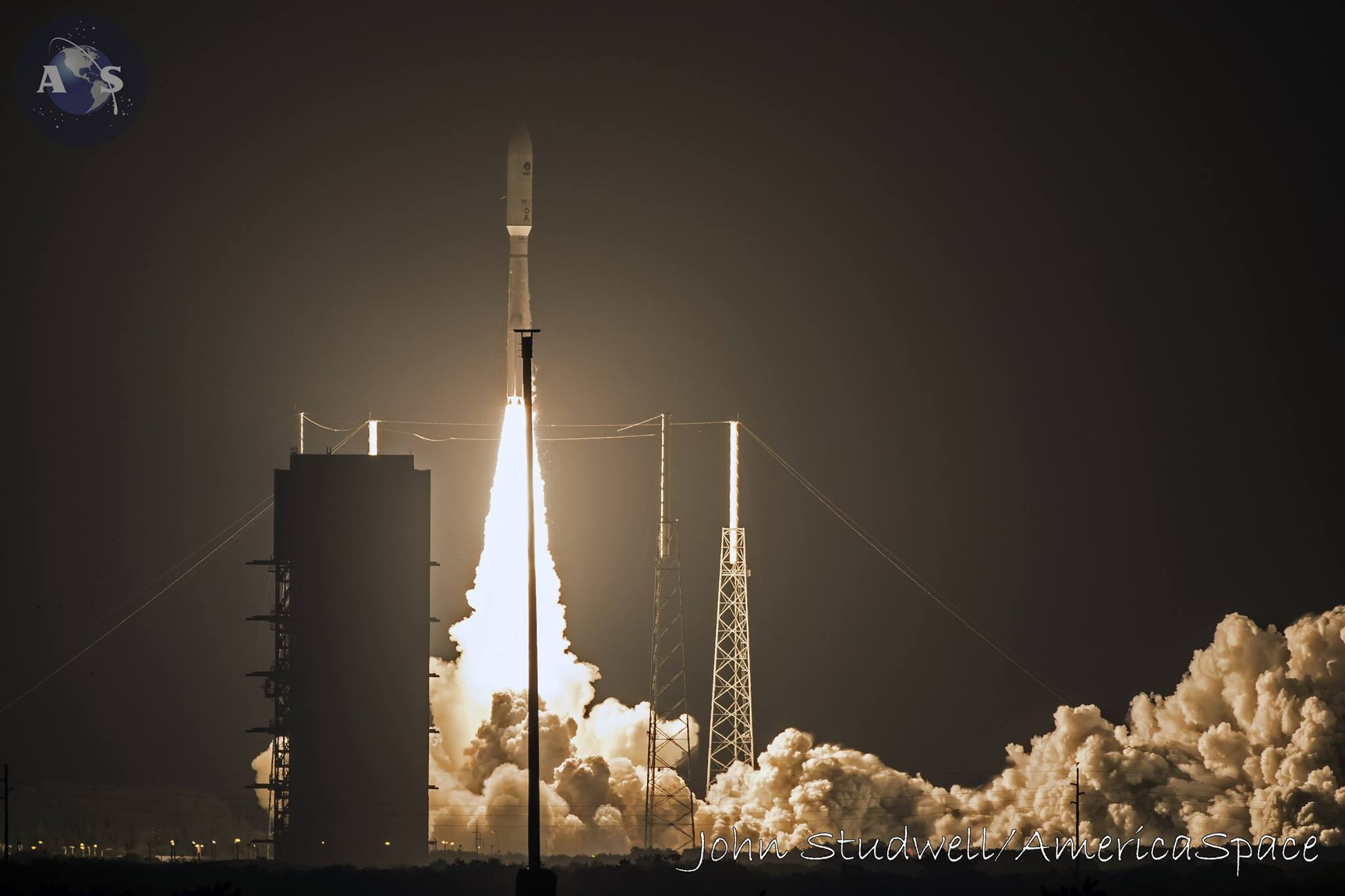
Unfortunately, the fruitfulness in terms of missions did not translate into success on the ground, for in March 2014—the very same month that ULA completed its 80th successful mission—Russia annexed Crimea, as part of a wider offensive which included the invasion of eastern Ukraine. Since the Atlas V’s RD-180 engines were Russian-provided, ULA received significant criticism from SpaceX, in particular, over the extent to which its purchase of the engines complied with Ukraine sanctions against President Vladimir Putin’s regime. A subsequent injunction—which ULA described scornfully as “an opportunistic action by SpaceX,” intended “to disrupt a national security launch contract so long after the award”—was briefly imposed in May, but later lifted. Keen to secure Department of Defense contracts for its Falcon 9 booster, SpaceX had already lodged a lawsuit against ULA in April, in response to the Air Force’s planned “block buy” of up to 36 Atlas V and Delta IV booster cores and perceived monopoly of the national security payload market. The lawsuit was later dismissed.
However, the situation regarding Russian-built engines led to the beginning of work to develop domestic “next-generation liquid oxygen/hydrocarbon first-stage propulsion concepts,” and, in June 2014, ULA issued contracts for new proposals which would be able to meet a first launch by 2019. Two months later, contracts were signed to develop Blue Origin’s low-recurring-cost BE-4 engine—fueled by liquid oxygen and liquefied natural gas—and in April 2015 ULA announced that its Next Generation Launch System (NGLS) would be called “Vulcan,” following a nationwide naming competition which led to the casting of over a million votes. Described by ULA President and CEO Tory Bruno as “the highest-performing, most cost-efficient rocket on the market,” it was expected to be “a game-changer,” not least in that its Sensible, Modular, Autonomous Return Technology (SMART) aimed to reuse Vulcan’s main engines via mid-air capture. “Vulcan will offer our customers unprecedented flexibility in a single system,” Mr. Bruno told AmericaSpace in an email correspondence. “From LEO to Pluto, the single core does it all and the simple design is more cost-efficient for all customers: defense and national security, NASA science and human spaceflight or commercial.”
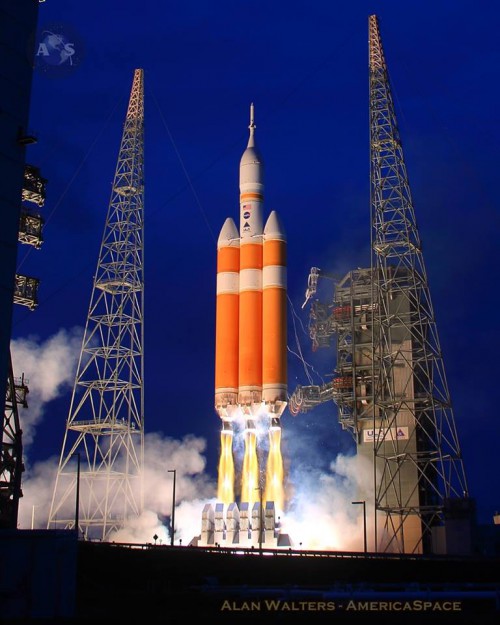
As these events unfolded, ULA’s fleet of Atlas V, Delta IV, and Delta II vehicles continued with their aggressive campaign of launches, leading up to last Friday’s landmark 100th mission. And on Thursday, 8 October, an Atlas V 401—the “barebones” variant of the booster, with no strap-on solid-fueled rockets, a single-engine Centaur upper stage, although on this occasion equipped with an Extended Payload Fairing (EPF), about 3 feet (0.9 meters) taller than the standard Payload Fairing (PLF)—launched from Vandenberg on the 101st ULA mission. Aboard the vehicle was the NROL-55 classified payload for the National Reconnaissance Office, which has been rumored to possibly be a Naval Ocean Surveillance System (NOSS) satellite. After NROL-55, two more missions remain on the books for 2015: the GPS IIF-11 satellite, to be launched on 30 October, and the first ULA-boosted Cygnus cargo mission to the International Space Station (ISS), which is presently targeted to fly no sooner than 3 December.
Next year, 2016, will mark ULA’s 10th anniversary and is expected to support as many as 14 missions, most notably despatching NASA’s InSight geophysical landing craft on a voyage to Mars and the OSIRIS-REx sample-return mission to the asteroid Bennu. With the Air Force’s block-buy of Atlas V and Delta IV cores having begun to drive costs down, commercial clients have begun to be courted, and, in August 2015, contracts were signed to deliver the EchoStar XIX communications satellite to orbit in the fall of next year.
However, 2017 is expected to prove a banner year, as an Atlas vehicle carries human passengers into orbit for the first time in over a half-century. Earlier this summer, NASA astronauts Bob Behnken, Eric Boe, Doug Hurley, and Suni Williams were selected to support the Commercial Crew test flights of both SpaceX’s Dragon V-2 and Boeing’s CST-100—recently renamed “Starliner,” whose crew access tower is in the process of being erected at the Cape’s SLC-41—and ULA anticipates staging a 30-day unpiloted test flight to the ISS in April, followed by a 14-day crewed mission to the space station in July. The two-member crew would likely include one of the four NASA astronauts and a Boeing test pilot. A fully operational Starliner mission, carrying a crew of four to the station, would then follow in December 2017. And by then, if all goes well, 100 flights will be history and ULA should be squarely heading toward its 150th mission.
Yet the business of launching rockets is difficult, notoriously unforgiving, and intensely demanding, and as the company heads through its first centenary of missions and gets ready to tackle the next 100 flights—several of which will involve human, as well as robotic passengers—we are reminded of the words of Dane Drefke: “You get one chance to get it right and if it’s not 100-percent right when it leaves the ground, you’ll know about it!”
Be sure to “Like” AmericaSpace on Facebook and follow us on Twitter: @AmericaSpace
.




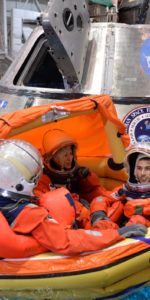
When the falcon blew up it was the end of SpaceX, it’s just that it has not sunk in yet. NASA will never fly a human being on a SpaceX rocket after it blew up. Likewise the Air Force will not be risking any of their billion dollar spy big birds on that 27 engine monstrosity. And since there is not enough of a market in GEO and LEO satellites to keep them in business without continued NASA dollars and free support, SpaceX will die with the ISS. The sooner the space station to nowhere closes shop, burns up, and falls into the ocean, the better. Boeing will probably cash in with their taxi just in time to make the last few runs to evacuate the crew.
I expect to see ISRU on the Moon opening up the Solar System for human exploration and colonization.
“The sooner the space station to nowhere closes shop, burns up, and falls into the ocean, the better.”
I also expect the International Space Station to eventually be upgraded with some new and much larger modules and still be doing needed research, and other important work, in the 2060s and even much longer than that.
For flight safety enhancement, improved LEO asset efficiency, economic reasons,and general convenience future private and national space stations should fly in the same orbit as, and actively maintain ‘neighborly closeness’ to, the International Space Station.
If we cannot permanently maintain and evolve an International Space Station ‘community’ in LEO, we are unlikely to have permanent ISRU, research, residence, school, recreational, entertainment, and tourist facilities on the Moon.
If we cannot have permanent colonies on the Moon we are unlikely to have permanent colonies on Phobos, Mars, and Ceres.
And if we cannot develop permanent colonies on Phobos, Mars, and Ceres, then we humans aren’t anywhere near as clever as we like to think we are.
And I was just thinking about how much I missed the Gary Church perspective on space exploration.
Think what you want. The infamous excluded one does not seem to be missed by anyone else. His name sure does get used on whoever dares to talk bad about NewSpace. Seen several people branded Gary Church who were not. Coastal Ron continues to troll and bully to his hearts content. He is only banned from a few blogs instead of all of them.
As for Coastal Ron, not on AmericaSpace, he doesn’t.
AmericaSpace is a no-troll zone for all, regardless of views, politics, etc..
Gary is still active.
See the comments after the http://www.spacepolicyonline.com/ article: ‘Lightfoot Confident Humans Will Be At Mars in 20 Years’ By Marcia S. Smith 7-Oct-2015.
SpaceX CRS-7 was shot down by Russia as a signal of what is to come by canceling the RD-180 engine purchases. As such NASA revised the crew seat purchase to ISS for $500M for flights after 2017….This was covered up by SpaceX saying that a strut from an unnamed provider was responsible. The part in question failed at less than 20% of design limit. Futhermore NASA, the AIR FORCE or Congress didn’t want to head the investigation rather they would merely review SpaceX investigation…Also this has delayed SpaceX from proving their reusabilty concept for the 1st stage that will allow them to take market share from Russia…and others..This was a win win for Russia.
Colorado, your comments,“The sooner the space station to nowhere closes shop, burns up, and falls into the ocean, the better” and “LEO is a dead end. There is nothing there. No reason to maintain any “community.” Are in contradiction with your other comment, “Why isn’t the ISS in GEO? Radiation.”
The reduced GCRs, and other “Radiation”, is one very good reason why LEO is useful to humans and our satellites.
GEO is also quite useful, however LEO is much closer to the Earth and for Earth observation and communication purposes, closer can sometimes be much better.
Earth is currently our economic center and being close to it in LEO offers uniquely charming beauty and undeniable usefulness.
There is space tourism to LEO, but not yet to GEO.
Lots of interesting and useful nanosats headed for LEO. And lots of other satellites are in LEO.
Note the 11/20/2013 article by Los Angeles Air Force Base Public Affairs ‘Small satellites on a big mission: Air Force launches high-tech NanoSats’ “The satellites leverage commercial-off-the-shelf electronics and open source standards to minimize research and development investments. Further, the satellites do not use radiation-hardened components and have little redundancy.”
Sometimes closeness and quick and cheap and reduced radiation and the lower LEO launch costs make for a ‘winning satellite location’.
I could argue but most of my comments get removed so I am no longer going to waste my time. Jim Hillhouse censors this forum of anything he finds the least bit disagreeable. It’s all yours James, enjoy the tourism.
A few years ago I noticed that over 95 of my comments on the Internet had been “removed”.
One really smart and helpful space tech expert was banned from posting anywhere on the Internet if he wanted to keep his job. I didn’t always agree with him, but I always read what he said very carefully and respected his extensive knowledge and wisdom. I miss his comments and hope he gets back on the Internet someday.
Over the last sixty-three years I’ve been banned, censored, and a whole lot worse. And I usually laugh about it.
.
Unless Jim Hillhouse tries to ‘burn you at the stake’ or ‘nail you to a cross’, perhaps you shouldn’t complain about him.
“-perhaps you shouldn’t complain about him.”
Perhaps you shouldn’t wag your finger at other people who are not being allowed to comment.